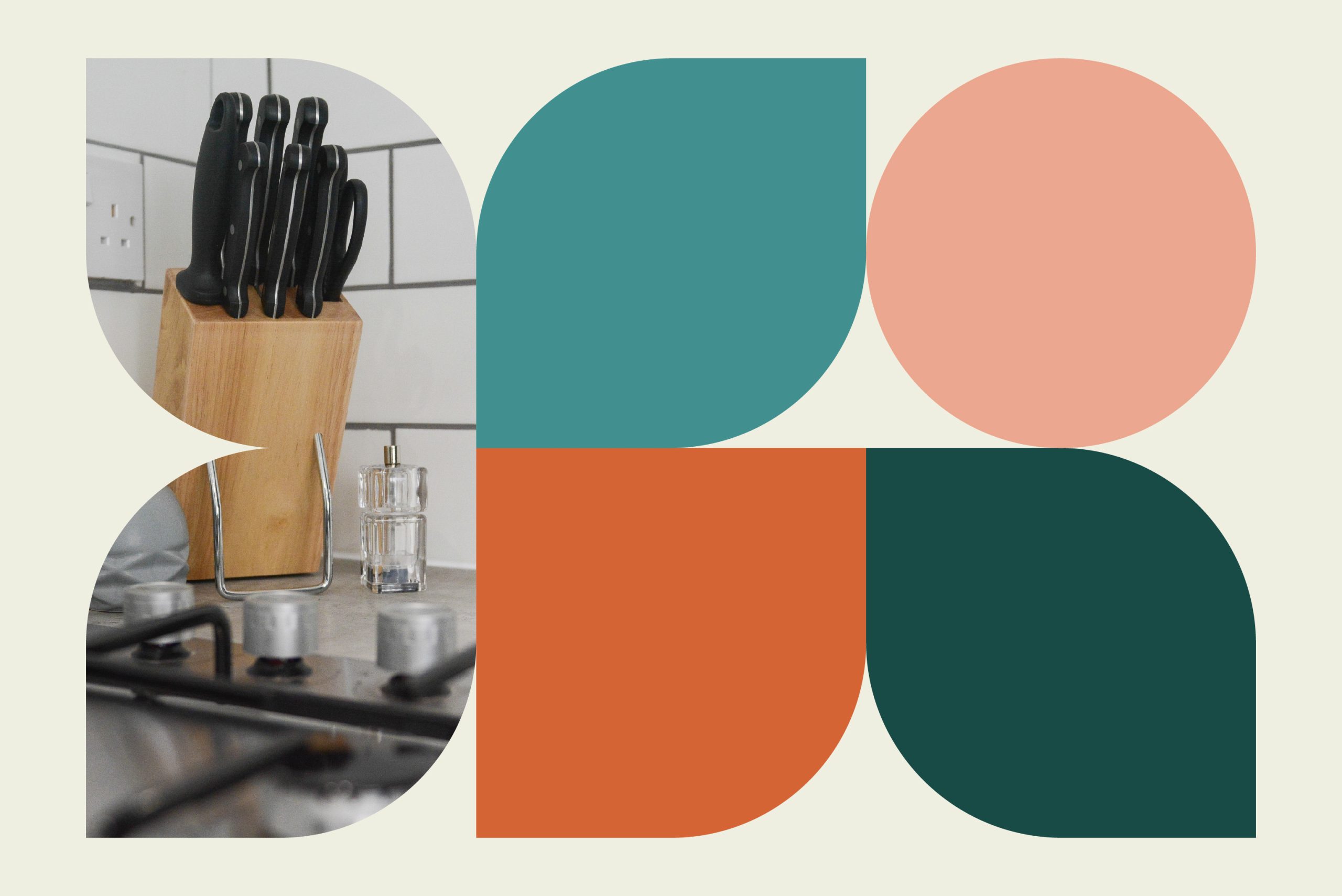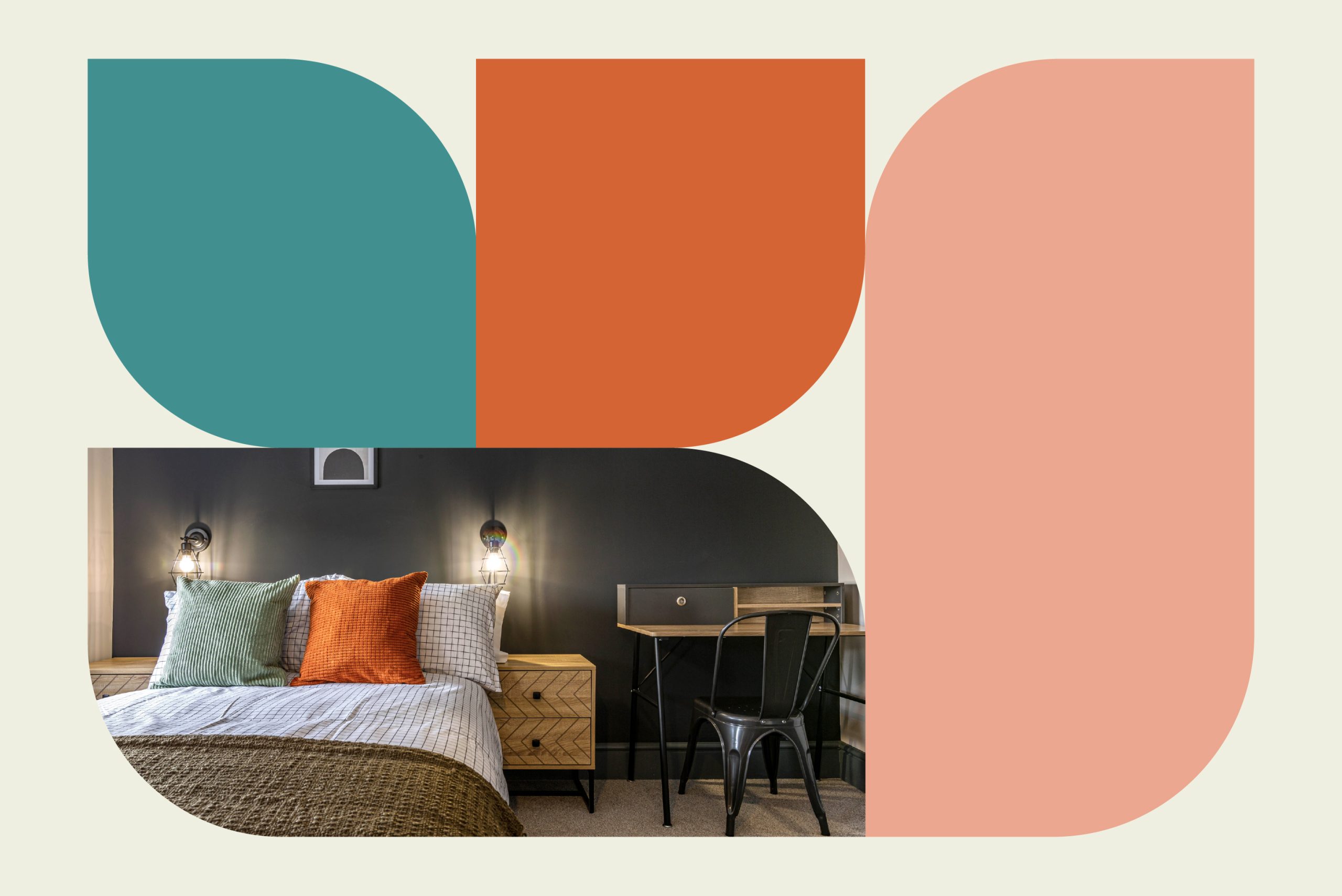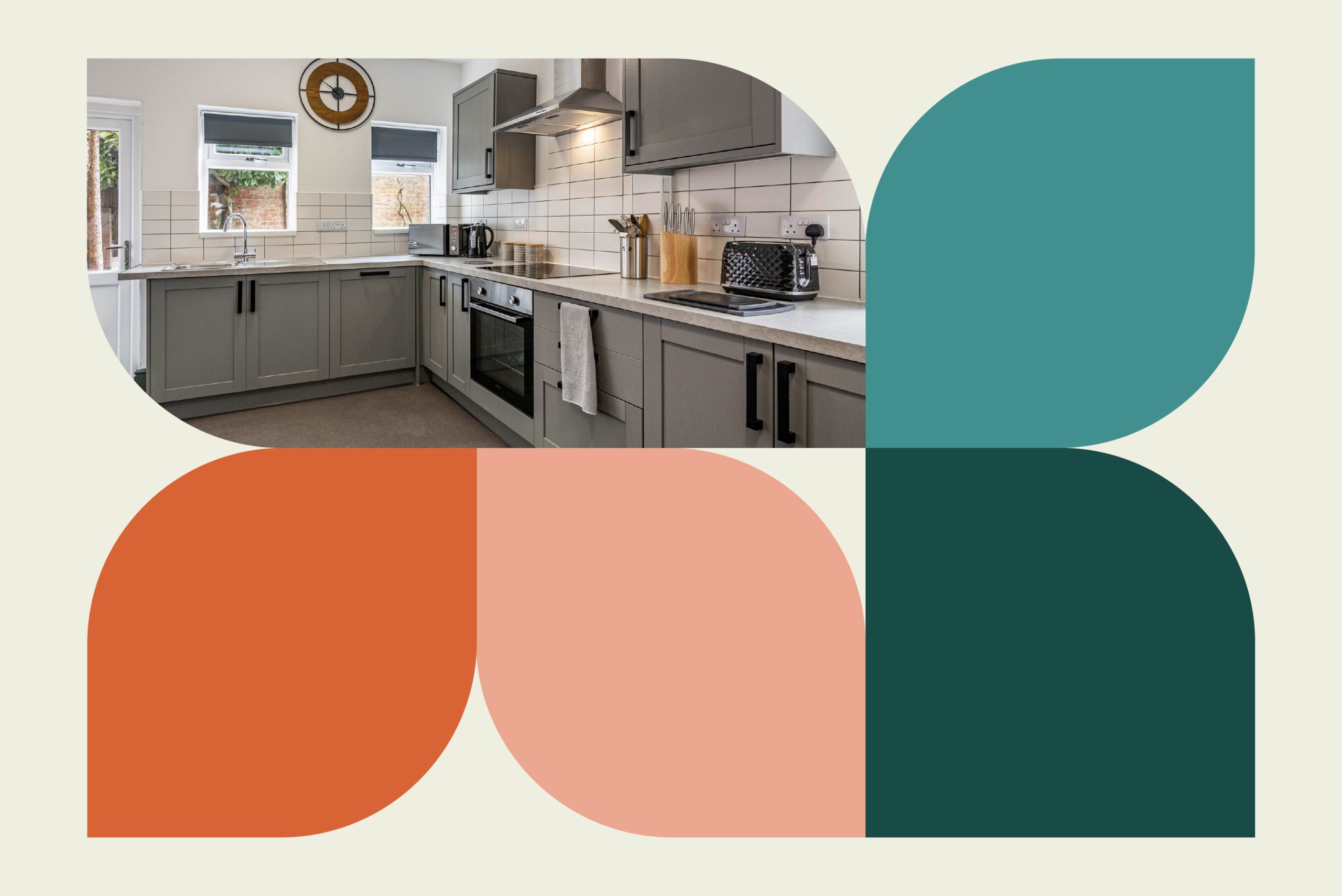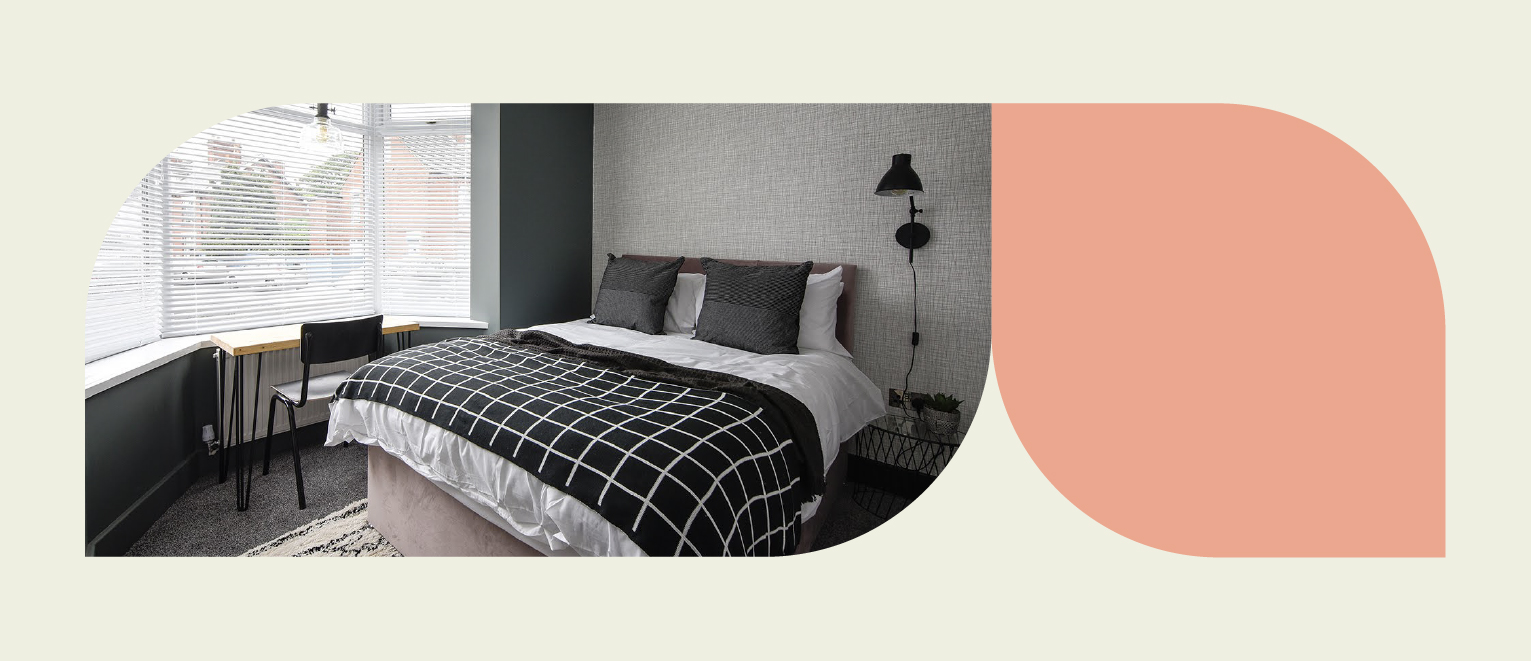Renting out your property is exciting, but it comes with some big decisions. One of the most important of these is how you’re going to furnish it; fully furnished, part-furnished or unfurnished? While these options may sound straightforward, definitions can get blurred and different tenants can have different expectations.
In this easy-to-follow guide for landlords, we’ll help you get the most out of your rental property. You’ll find out what fully furnished, part-furnished and unfurnished actually mean, so that you can make the best decision for your circumstances, keep your tenants happy and renting for longer, and protect your investment. Let’s get stuck in!
What’s included in fully furnished properties?
When we talk about a fully furnished property, we mean a space that’s ready for immediate occupancy. This means all essential furniture, furnishings and white goods are included in the price of the rent.
A fully furnished property usually includes:
- Bed frame
- Mattress
- Bedside table
- Wardrobe / chest of drawers
- Sofa / armchair
- Coffee table
- Dining table and chairs
- Light fittings
- Curtains / blinds
- Cooker
- Fridge freezer
- Washing machine
Houses in Multiple Occupation (HMOs) are typically always fully furnished, especially if the rooms are aimed at unrelated occupants. Fully furnished bedrooms and communal areas are appealing to HMO tenants, as they can move in easily, without delay, and without worrying about the expense of furnishing their new home themselves.
HMOs are typically furnished with all of the above, and usually also include the following in communal areas:
- Microwave
- Toaster
- Kettle
- Crockery and utensils
- Cleaning equipment
- Drying facilities
- Television / radio
Student HMOs are less likely to include things like crockery and cooking utensils as students typically already own these items. But remember, what’s suitable in one HMO isn’t always necessary in others!

Fully furnished properties cater to a diverse range of tenants, but furnishing preferences can vary based on demographics and location. While some tenants appreciate the convenience of a fully equipped space, others prefer flexibility and the ability to personalise their living arrangements. That’s where part-furnished properties come in…
What’s included in part-furnished properties?
While HMOs are typically always fully furnished, single let properties can be fully furnished, part-furnished or unfurnished. Part-furnished properties strike a balance between providing essential amenities and allowing tenants room to customise their home.
Part-furnished properties typically include:
- Light fittings
- Curtains / blinds
- Cooker
- Fridge freezer
- Washing machine
Some part-furnished properties also include some large furniture items such as a dining table or bed frame, but this is at the discretion of the landlord.
Contrary to the belief that more furnishing equals higher rent, over-furnishing a property can sometimes have the opposite effect, especially if landlords choose cheap appliances and furniture to keep their costs low. Landlords must consider the quality of furnishings and appliances, as well as the preferences of their target demographic, to strike the right balance between desirability and practicality. Check out our blog 4 Ways to Increase Property Value for more information on understanding the needs and preferences of tenant demographics.
Essentials for serviced accommodation
In serviced accommodation (also called short-term lets), furnishings and decor play a unique role in attracting guests and maximising rental income. This means high-end fixtures and fittings almost always translate to being able to charge higher rent!
Serviced accommodation usually includes everything that’s in an HMO, as well as some or all of following:
- Lamps
- Cushions and throws
- Rugs
- Linen and towels
- Artwork
- Mirrors
While these additional fixtures and fittings can help attract more guests and produce higher rental incomes, it’s important not to include anything too expensive or any items that could get easily damaged, as this will offset the increase in rental income.

Landlord liabilities to consider when furnishing your property
Regardless of whether you choose to rent out your property as fully furnished, part-furnished or as serviced accommodation, it’s crucial to weigh up the associated liabilities. Anything that appears on the property inventory as part of the rental agreement must be repaired or replaced by you if it fails during the tenancy.
With no control over how well tenants maintain white goods like washing machines, dishwashers and tumble dryers, these items could need replacing sooner than expected, which would offset any increase in rent that you get from including them in the property. There are also legal standards to follow.
In some regions of the UK, it’s a requirement for any electrical appliances older than 12 months to be PAT tested to confirm they’re both safe and operational before you can add them to your property inventory. PAT testing isn’t required on brand new electrical items, however, as they’re deemed to be safe for 12 months. Yearly PAT testing is an additional expense to consider and it can be time consuming, particularly if you have multiple properties or if one of your appliances fails!
You also need to consider the Furniture and Furnishings (Fire Safety) Regulations 1988, which cover various items such as beds, sofas and cushions, and stipulate that the furnishings you provide must have fire-resistant fillings, pass match and cigarette tests, and be labelled with fire safety warnings.
Lastly, landlords are required to have buildings insurance as part of their mortgage stipulations and these policies often come with a small amount of contents cover. It’s important to note, though, that this basic contents cover isn’t usually enough to cover a fully-furnished property, so the cover may need to be extended. This added protection will help you in case anything happens to the furniture or furnishings in your property, protecting your investment.
What’s included in unfurnished properties?
Unfurnished properties don’t usually include any fixtures, furniture or white goods unless they’re built-in to the property itself. However, sometimes an unfurnished property may have white goods or furnishings left in situ, either by a previous tenant or if the property was inherited. In these circumstances, you could offer to sell or gift these items to an incoming tenant so that they don’t feature in the inventory and become the tenant’s responsibility if they become faulty.
Unfurnished properties generally require a smaller initial investment and fewer maintenance costs as there’s less wear and tear to worry about.

Fully furnished, part-furnished or unfurnished: What’s right for my property?
Deciding whether to rent out your property as fully furnished, part-furnished or unfurnished depends on various factors including your target market, location, rental market trends and personal preferences.
Here’s a breakdown of each option to help you decide what’s right for your property:
Fully furnished: This option attracts tenants who prefer convenience and are looking for a place to move in without the hassle of buying furniture. They’re often favoured by short-term renters, students, young professionals and HMO tenants. Keep in mind that fully furnished properties may attract higher rents, but they also require a larger initial investment and can incur higher maintenance costs.
Part-furnished: Part-furnished properties strike a balance between fully furnished and unfurnished options. They offer flexibility to tenants who have some furniture of their own but still need certain essentials and they can attract a broad range of tenants including families and long-term renters. Since most part-furnished properties include essential white goods, they can require a larger initial investment but they generally experience less wear and tear than fully furnished properties.
Unfurnished: Unfurnished properties are empty except for fixed items like built-in appliances. They’re usually favoured by long-term renters who have their own furniture and want the freedom to completely personalise their living space. These types of properties generally require less maintenance and are great for providing tenants and landlords with long-term stability.
Ultimately, it’s important to consider your target demographic, rental market demands and your own preferences when deciding how to furnish your rental property. You may want to research local rental trends and seek advice from a property management company in your area for insights into what works best for your specific market and property type.
Partner with Purseglove for your property management needs
Contact us today to discuss your HMO or single let property or to see if serviced accommodation is the best option for your property! Get in touch.
